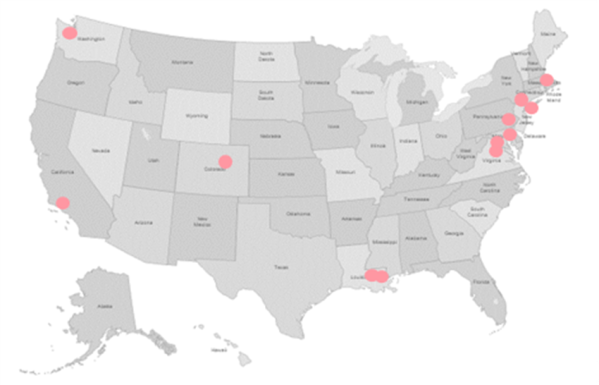‘She is the victim out there that nobody cares about’

In 2018 Samantha Jury-Dada was awarded a Winston Churchill Memorial Trust Travelling Fellowship. In October that year, she travelled to New York, Philadelphia, Baltimore, West Virginia, Washington DC and New Orleans – over a five week period.
The basis of the trip was to understand how different agencies and organisations were working to provide support and interventions to young women and girls who were involved with gangs.
The trip also sought to find best practice examples of organisations working with young men who may be displaying abusive behaviours. As the primary measure of success for many gang intervention programmes is related to the cessation of the identified criminal or gang behaviour, rather than a reduction in all harmful behaviours. The potential consequence being that while these men may have successfully exited from the gang, they could continue to perpetrate abuse in their adult relationships, causing harm not only to victims, but to their wider communities and at a cost to society and public services.
The project primarily looked at how public sector professionals interact with these cohorts of young people, as an acknowledgement that this is the area where there is most opportunity for change.
The Findings
Identifying women and girls through the criminal justice system
The women and girls associated with gang members are invisible to services. Firstly, because they do not want to be seen. Secondly, because of police culture. There is a culture in the police to not acknowledge women and girls or their risk. This is evident in the USA and in the UK. This is serious as intervention services are being commissioned based on flawed data. Los Angeles have at least 40% of their gang intervention and prevention services attended by females, demonstrating best practice on effectively targeting women and girls.
Working with women and girls affected by gangs
These young women do not consider themselves victims and therefore will not engage with services that are marketed as generalist ‘victim support’ services. Additionally, victims of domestic abuse whose perpetrator is a gang member will also face consequences for cooperating with authorities not only from their partner, but the gang. The fear that domestic abuse victims have about surveillance and stalking is further heightened when the perpetrator is in a gang. It feels like they have ‘eyes everywhere’. These young women also do not fit the stereotype of the ‘ideal victim’. They are uncooperative, may have criminal records and have additional barriers to accessing support if they are an ethnic minority.
Understanding the context of relationships between girls and gang members
While not universally true that young men and boys who are involved with gangs will be abusive in their relationships, the trauma they have experienced makes it more likely. Their behaviour in a relationship may mimic the toxic relationship he has with fellow gang members. The girls may have also had a difficult upbringing. Therefore, they share significant trauma backgrounds. This combination can result in an intense and violent relationship. These hard to reach women responded to ‘self-love’, self-esteem building workshops rather than traditional victim support services.
‘The control melds to the commitment [to the gang]’
Techniques deployed to tackle gender-based violence associated with gang violence:
- Credible messengers who can relate to young people because they have lived experience, understand the choices facing that young person and look and speak like them. They are consciously recruited by the police and charities in the USA.
- Female outreach staff. If a gang intervention service is only male, for young women and girls these services have staff that look and sound like those who have exposed them to violence. This can alienate a whole cohort of vulnerable people from accessing support.
- Meeting the other needs of the young person before attempting gang exit. A multi-agency response which acknowledges that young people need to have health, education, employment and household issues resolved before they can attempt to put their life back on track.
Key Recommendations
Police need to tackle the culture that results in women and girls associated with gangs not being acknowledged. A gender audit of police gang databases should be undertaken to assess whether the practice is widespread.
There should be an effort to coordinate charities in the UK that offer support to girls affected by gangs.
Those working on the frontline with young people affected by gang violence should use a trauma informed approach. They should also undertake training on the dynamics of power and control and the consequences of domestic abuse.
Organisations that deliver frontline services must make an active effort to recruit outreach staff from the communities that they are working in and have female frontline workers.
Local authorities should produce up to date directories of commissioned services, for use by frontline staff. So staff are aware of the resources available to them to help young women and girls.
Local and national politicians should take responsibility for coordinating community leaders and frontline services to tackle issues associated with gangs, including gender-based violence.
